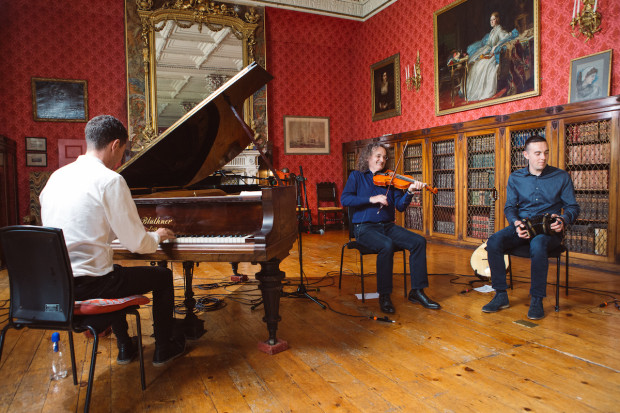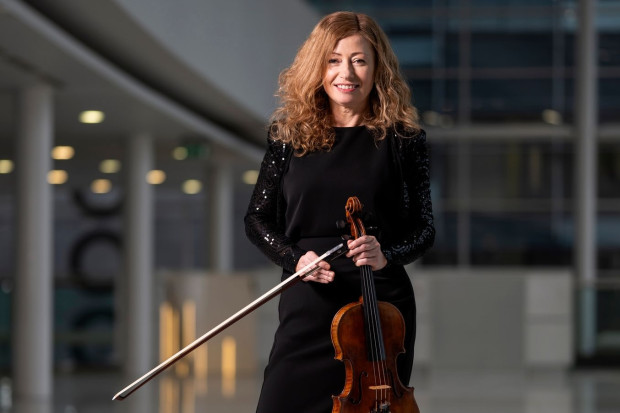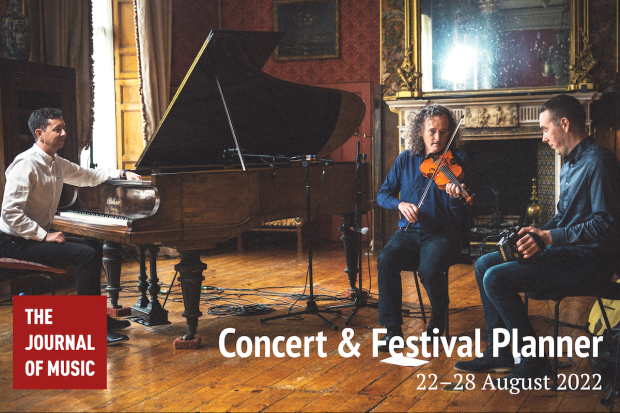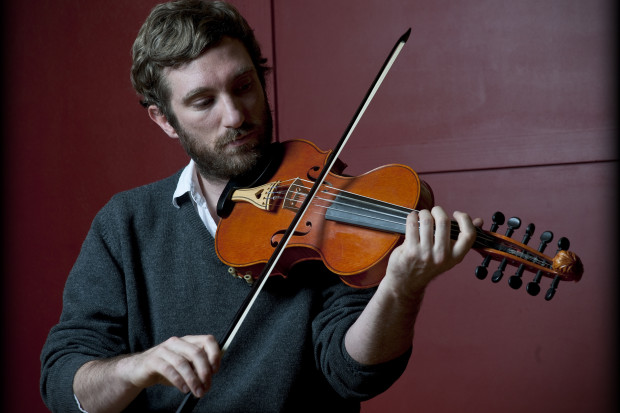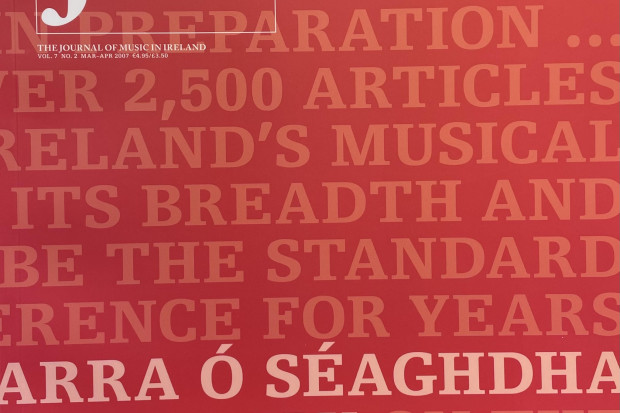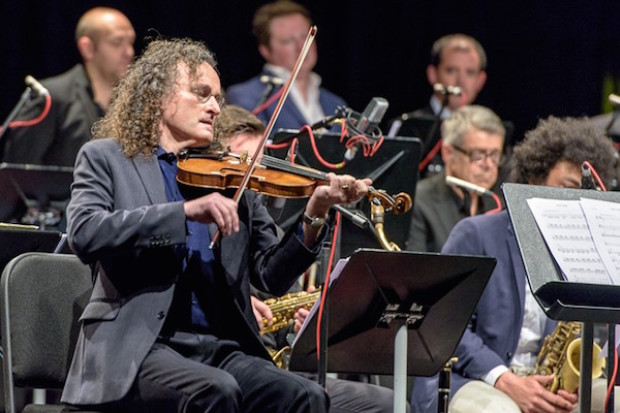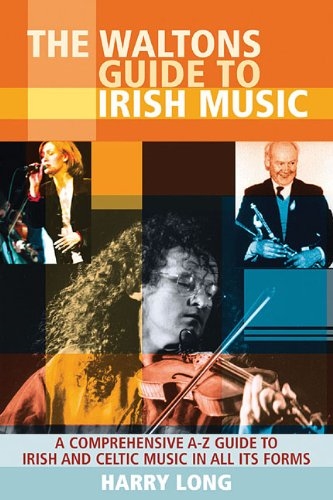
Music or Market Guide?
‘Despite its “light” taste in music and song (by today’s traditional music standards) Waltons nevertheless provided a reference point for Irishness in music… they contributed hugely in making music accessible throughout the island and in Irish communities abroad’ (Companion to Irish Traditional Music, p. 431)
This excerpt from an entry entitled ‘Waltons of Dublin’ in The Companion to Irish Traditional Music, edited by Fintan Vallely, offers a particular point of entry into a discussion of Waltons’ 2005 publication The Waltons Guide to Irish Music. So why begin a book review with a quote from another book about the publishers of this one? The most obvious answer is that as an A-Z book, The Waltons Guide is perhaps most comparable to The Companion, which was published in 1999 and quickly became the standard reference book for Irish traditional music. The primary focus of The Waltons Guide is also Irish traditional music and, like its predecessor, it too extends its reach into the Celtic world (albeit in a more explicit manner, given its front-cover banner ‘A comprehensive A-Z guide to Irish and Celtic music in all its forms’). From an entirely pragmatic perspective, one might ask if The Waltons Guide does little more than duplicate the information found in The Companion? Or is it simply aimed at a different market? (It should be noted that this project, The Waltons Guide, was begun in 1995, its publication coming after ten years of collecting/writing. I am in no way implying that the author has copied entries from The Companion, but rather that the categories for inclusion are naturally going to cross-over a great deal.)
Returning to the opening quote above, perhaps what most tellingly separates these two A-Z format books is arguably revealed in the gentle berating by The Companion of Waltons for its ‘light’ (versus serious, traditional) catalogue. The Companion stakes out its audience as ‘devotees of Irish traditional music’. The expectation, then, might be that, as a flagship product of this company, The Waltons Guide might represent a more catholic approach to Irish music as a category and practice. On inspection this certainly seems to be the case. The Waltons Guide is perhaps best viewed as an interesting product of a company with a long history of commodifying Irish music in a variety of forms. In its own entry entitled ‘Waltons’, The Guide unabashedly speaks to Waltons’ own place in the Irish music world by placing itself squarely in the centre as ‘Ireland’s best-known music company’ (p. 402). What is perhaps most refreshing about this approach – and I say this without irony – is the manner in which the commercial dimension of Irish music is not downplayed or evaded; quite the opposite, in fact.
The Waltons Guide is an encapsulation, in book form, of the commercial practices of the Dublin shop, with its bric-a-brac approach to selling and publishing Irish-music-related products over the years, from Glenside 78s and 45s, to music tutor books, instruments, and even syllabi for music exams. As a business, Waltons has not attempted to conceal the reality of commercialism that has characterised much of the circulation of Irish traditional music in the twentieth century. Why then, should this publication be any different? Author Harry Long, who has also written Waltons Ireland’s Best Tin Whistle Tunes, is unapologetic about the commercial dimension of the book in his introduction to this guide. While Long notes that ‘personal taste and interests were undoubtedly factors in making certain choices’ for inclusion, more tellingly he reveals that ‘the release of commercial recordings [was] a primary factor in considering whether or not to include’ certain people (p. 7). On one level, Long is doing his readership (or a particular kind of readership) a favour by including only musicians whom people will be able to access through commercial recordings – given that this type of book is often used by its readers as a means of navigating a music tradition by exploring related products on the market. But that’s not to say that Long is excused from participating in reifying an Irish traditional music canon in his approach of representing particular music styles and particular performers. And yes, the categories of ‘Irish music’ and ‘Celtic music’ are treated here more as commercial (as opposed to contested and critical) categories. Yet for some reason, given the purpose and origins of the book, this does not cause too much anxiety because, with due respect to the author and the publishers, this is simply not the place to debate and agonise over meaning in this manner.
Part of the charm of – while also, undoubtedly, the trouble with – The Waltons Guide is the manner in which Long’s entries are embedded with casual value judgements. One feels as if he or she is having a chat with the author, which can be both entertaining and disconcerting. For example, fiddler Martin Hayes’ style, we are told, ‘may not to be to everyone’s taste’, which seems more anecdotal than actually useful. Under the ‘UCC’ entry, while the Neff Bros receive the accolade of ‘highly talented duo’, in the same sentence another musical product of that university, the band Nomos, is not evaluated on any level. It seems a little bizarre that ‘Henry the VIII’ would be designated an entry and ‘copyright’, so crucial to any discussion of Irish music and commercialism, and especially in the context of this book, would be absent. Such small inconsistencies are found scattered throughout the book and yet there is an undeniable appeal to the overall style. Moreover, to harp on about such details is to perhaps miss the point, which is, it seems, to offer its customers an uncomplicated portal into the world of Irish music as this company sees it, and as Long articulates it. Overall, while there is not anything particularly new here in terms of content, the Guide remains a well-organised, personable and accessible book that does almost exactly what it says on the tin (its ‘comprehensive’ claim needing to be approached with caution).
Invariably, comparisons will be made with Vallely’s Companion just as I have done, a book with more (and more critical and comprehensive) entries, and drawing from a wide pool of expertise (and hands up before anyone else points it out – I have contributed to the section entitled ‘piano’ in The Companion). The Waltons Guide to Irish Music may lack the many voices and hence perspectives of its closest counterpart, but the voice that is present manages to speak both personally for an author for whom this book is undoubtedly a labour of love, as well as for a company whose firm presence in the domain of Irish music production and consumption offers justification for this publication and its particular perspective.
There is not doubt that this book has a clear purpose and place, inviting anyone interested in Irish (and Celtic) music, especially beginners, to browse and dip into it. However, there is as much, if not more worth in viewing The Waltons Guide as a document coming out of a particular historical moment, presenting a specific perspective on the world of Irish music that does not deny the music’s commercial dimensions but rather sees such dimensions as an integral part of the tradition itself.
Published on 1 January 2006
Aileen Dillane is an ethnomusicologist and musician based in the Irish World Academy, University of Limerick.










